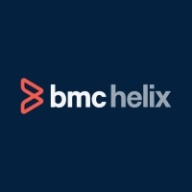


BMC TrueSight Server Automation and AWS CloudFormation are strong contenders in the server and infrastructure automation category. BMC seems to have the upper hand in its cross-operating system support, which is essential for managing physical and virtual servers, while AWS specializes in cloud-based, scalable deployments.
Features: BMC TrueSight Server Automation offers extensive patching and compliance management across diverse operating systems, robust automation, and scripting tools along with out-of-the-box compliance templates. AWS CloudFormation allows users to manage AWS infrastructure comprehensively with its infrastructure-as-code approach. It offers configurable templates and a straightforward method for deploying cloud resources with scalability benefits.
Room for Improvement: BMC TrueSight Server Automation can enhance its API and vendor integrations, simplify its setup, and improve multitasking and container patching. Its REST call methodologies also need advancement. AWS CloudFormation should reduce verbosity, enhance multi-cloud support, and improve error handling and documentation. The handling of cross-account dynamic references needs improvement, alongside better adoption of new AWS services and less Amazon-centric focus.
Ease of Deployment and Customer Service: BMC TrueSight Server Automation is known for its complex, on-premises deployments but offers excellent customer support and technical assistance. AWS CloudFormation, built primarily for AWS infrastructure, offers easier cloud deployments, though its AWS-focused design and documentation might limit usability.
Pricing and ROI: BMC TrueSight Server Automation is perceived as high-priced due to its server-based pricing model but delivers a good ROI with substantial deployments and support. AWS CloudFormation does not have direct licensing costs, making it a cost-effective solution within the AWS ecosystem with expenses tied to resource usage, offering efficient resource management and potential ROI benefits.
Everything we've gained from it makes my job easier day after day, and I see value in it as an engineer.
Microsoft Intune not only saves costs by reducing the number of personnel needed but also offers a comprehensive solution for managing laptops, applications, security, individual access, and enrollment.
Importantly, when someone leaves the company, it helps protect document access on their devices.
When a support ticket is submitted, it directly reaches someone with Intune support expertise.
When I contacted Microsoft, they had the same expertise, if not more, which is phenomenal because I felt heard and my problem was solved.
Sometimes, the support provided is excellent, and the representative is knowledgeable, while other times, the service needs improvement.
While this might be acceptable for some, it can be lengthy depending on the urgency of the issue.
Free support for AWS CloudFormation is not provided, and while some support is understandable due to its complexity, assistance for service-related issues should be accessible without a cost.
The scalability of Microsoft Intune is ten out of ten.
Ideally, we want to automatically segregate devices based on user properties like primary use, but currently, dynamic groups seem limited to device properties.
It supports organizations with 200 endpoints and those with more than 15,000 endpoints.
Splitting CloudFormation into multiple formations results in changes to resources like API gateway URLs and Cognito pools, which causes issues, especially when trying to maintain consistency across resources.
Adjusting capacity and functionality is a fundamental use.
We have not experienced downtime, bugs, or glitches.
It appears Microsoft Intune undergoes changes without informing customers.
Microsoft Intune has been very stable.
It has been reliable and efficient in all my deployments.
Data loss can occur when splitting or scaling applications due to changes in resources.
It's a service that has been around for years, and it handles large complex deployments and updates with very good consistency.
Features like unlocking devices sometimes fail, and the support offered for other operating systems is insufficient.
There are communication issues, so you might start working with a feature without knowing if it will be deprecated six months from now.
Many third-party companies offer single-pane-of-glass reporting that shows you what your update environment looks like, how your patch is doing, application status, etc., but Intune's reporting is not intuitive.
It presents challenges for users unfamiliar with coding, posing as a barrier to fully utilizing CloudFormation.
Creating microservices and connecting multiple APIs into a single API gateway can be challenging; documentation should address specific needs.
Managing the correct order of resource creation and some updates can be tricky, especially with interdependent resources.
Introductory professional services, like a fast-track service, were included with our E5 membership, and there have been no additional costs.
The Intune suite and add-ons, such as batch management and remote help, are costly.
It costs approximately forty euros per user per month.
AWS CloudFormation is free.
Intune excels in configuration and compliance management for Windows 10, ensuring devices receive timely updates and adhere to organizational standards.
Dynamic groups allow us to set conditions for automatic membership, eliminating the need for user intervention or manual review and ensuring a seamless workflow.
Windows Autopatch is the most valuable because it removes the burden of patch management.
I can see the entire infrastructure and its connections through code.
Managing, maintaining, and deploying become easier as it allows the creation of the same resources on multiple accounts, making it efficient for infrastructure management.
The overall role of BMC TrueSight Server Automation in managing configuration drift brings return on investment through its automation, which helps save me the time and effort of my operations team.
| Product | Market Share (%) |
|---|---|
| Microsoft Intune | 9.4% |
| AWS CloudFormation | 2.4% |
| BMC TrueSight Server Automation | 3.1% |
| Other | 85.1% |



| Company Size | Count |
|---|---|
| Small Business | 116 |
| Midsize Enterprise | 46 |
| Large Enterprise | 152 |
| Company Size | Count |
|---|---|
| Small Business | 15 |
| Midsize Enterprise | 8 |
| Large Enterprise | 17 |
| Company Size | Count |
|---|---|
| Small Business | 2 |
| Midsize Enterprise | 5 |
| Large Enterprise | 15 |
Microsoft Intune provides centralized management of mobile devices and applications, ensuring security, compliance, and productivity through integration with Microsoft services like Microsoft 365 and Azure Active Directory.
Organizations use Intune for managing mobile devices and applications, enhancing security and compliance across platforms. With features like single sign-on, conditional access, and zero-touch deployment via Autopilot, it facilitates efficient operations. Intune's scalability, easy enrollment, and capabilities such as remote wipe support diverse device management, offering robust data protection and efficient operation. Despite its features, improvement areas include reporting, compatibility with non-Microsoft devices, and better support for macOS and Linux devices.
What are the key features of Microsoft Intune?
What benefits should users look for in reviews?
In industries such as finance, healthcare, and education, Microsoft Intune is implemented to ensure secure and compliant device management. Companies leverage its capabilities to deploy security policies and manage both corporate-owned and BYOD environments, facilitating a unified approach to data protection and compliance.
AWS CloudFormation provides a common language for you to model and provision AWS and third party application resources in your cloud environment. AWS CloudFormation allows you to use programming languages or a simple text file to model and provision, in an automated and secure manner, all the resources needed for your applications across all regions and accounts. This gives you a single source of truth for your AWS and third party resources.
BladeLogic Server Automation allows you to quickly and securely provision, configure, patch, and maintain physical, virtual, and cloud servers.
· Threat remediation: Combine with BMC SecOps Response Service to link vulnerabilities to identified patches and create a remediation plan
· Compliance: Integrates role-based access control, pre-configured policies for CIS, DISA, HIPAA, PCI, SOX, NIST, and SCAP, documentation, and remediation
· Provisioning: Supports unattended installs and image-based, script-based, or template-based provisioning
· Configuration: Consistently manage change and configuration activities across a broad range of server environments with one tool
· Reporting: Assess change impact or complete an audit using multiple dashboard views
· Patching: Supports and follows maintenance window guidelines to ensure timely delivery of patches
We monitor all Configuration Management reviews to prevent fraudulent reviews and keep review quality high. We do not post reviews by company employees or direct competitors. We validate each review for authenticity via cross-reference with LinkedIn, and personal follow-up with the reviewer when necessary.